Mustawd
Guest
I'm remaking BAK as a PC exclusive game
Oh nice. Looking forward to it.

I'm remaking BAK as a PC exclusive game




I'm remaking BAK as a PC exclusive game
Oh nice. Looking forward to it.
I'm making BAK2 as a PC exclusive game and it will be released Q4 2016
Oh nice. Looking forward to it.















Krondor Confidential - Interlude
When I was living in Van Nuys, California, a small group of us who’d all moved out from Oklahoma to work at New World Computing all lived in the same building. We’d dubbed it the “Fortress Fairmont”. Back home, we’d have thought nothing about leaving doors unlocked at night, or worried much about our neighbors. But the Fortress was a different story altogether. A nine foot wall surrounded the apartment complex, topped with concertina (aka razor) wire. There were no less than six security cameras on the bottom floor, and the landlords there watched everyone who came and went (and frequently interrogated the tenants on where they’d gone and who they’d been with)
Across the street from the Fairmont was a cute little 50s burger bar called Beeps, as well as a Subway where I had my choice of footlong sandwiches, but I rarely got to enjoy either eating establishment entirely in peace. A pimp regularly worked both joints, parading his girls outside the windows on the sidewalk as he tried to arrange business. He’d casually drop into a booth next to me, leaning over, usually trying to be coy, asking me if I was lonely. Maybe I wanted some company. He’d look at a girl outside, and she’d come up to the window, but she’d look like she was trying to read the menu from outside. Her coat or her sweater might come open so I could see the lingerie underneath, but putting lace on the ugliest cracked out homeless psychopaths strangely didn’t have much allure. The pimp would make offers. I’d tell him I really just wanted to eat a sandwich. He’d ask if I wanted to eat something else. I’d tell him not even on a bet. My refusals would usually escalate into his questioning my manhood at which point I’d either leave, or he’d get the message and try to go work another potential customer. A week or more might go by and I’d see him again, sometimes with a new girl, or sometimes the same ones but in slightly even more hideous outfits. On and on we danced, until at last I moved away.
Later on I’d find out that during the same time I’d been living in Los Angeles, Kurt Cobain had been in the complex right next to mine on Sherman Way. I wondered if he got hit on by the same pimp, and by the same hookers. With horror, I wondered if maybe one of the girls in the window might have even been Courtney Love.
The New Digs
My apartment in Eugene really couldn’t have been much more different than where I’d lived in Van Nuys. Where the Fairmont could have doubled for a SuperMax prison facility, my place on 19th street was a hippy student dorm that was masquerading as an apartment complex. I lived on the second floor, with a balcony overlooking the parking lot on one side, and a breathtaking view of a monstrously huge, moss covered tree that arched over someone else’s back yard. I’d often open up my curtains and just lay back on my couch, staring at that amazing tree for hours. It filled the entire back wall of my apartment. It was something ancient and wise, an Ent that had somehow found its way into the real world, rooting itself into the most mundane of circumstances in the hopes that no one would notice that the World Tree had gone rogue, settling itself in a sleepy college town in Oregon. But I knew its secret. And it knew that I knew. Or at least that’s the way I choose to remember it.
Not long after moving in, I began to meet the incredible cast of characters who would occupy what little off time I gave myself from Dynamix. Immediately next door were Pat and Leah, a young married couple. Pat was a sawed off part-time soldier for the National Guard that was studying to be a chef, while his deadpanning wife Leah was just about one of the funniest women I ever met (and I think she might even have done some stand up somewhere along the line). Between them they were the proud parents of Stone Pete, a chipped concrete statue of a cocker spaniel with dubious origins who often guarded our shared balcony (and whom they frequently dressed up in various outfits on special occasions).
Further on down lived two girls who were students at the University of Oregon, and of whom I grew particularly fond. As I was the resident with the biggest TV in the complex, Andrea and her roommate often dropped in for group viewings of Melrose Place, as well as occasionally allowing me to try out various recipes on them, with varying degrees of success. Andrea also later did me the great honor of being my date to my first ever company party at Dynamix where I unquestionably had the prettiest date on my arm. (Although she and her room mate would later move away at the close of the following school year, I was happy to learn that Andrea has since become an author in her own right, and recently released her first book.)
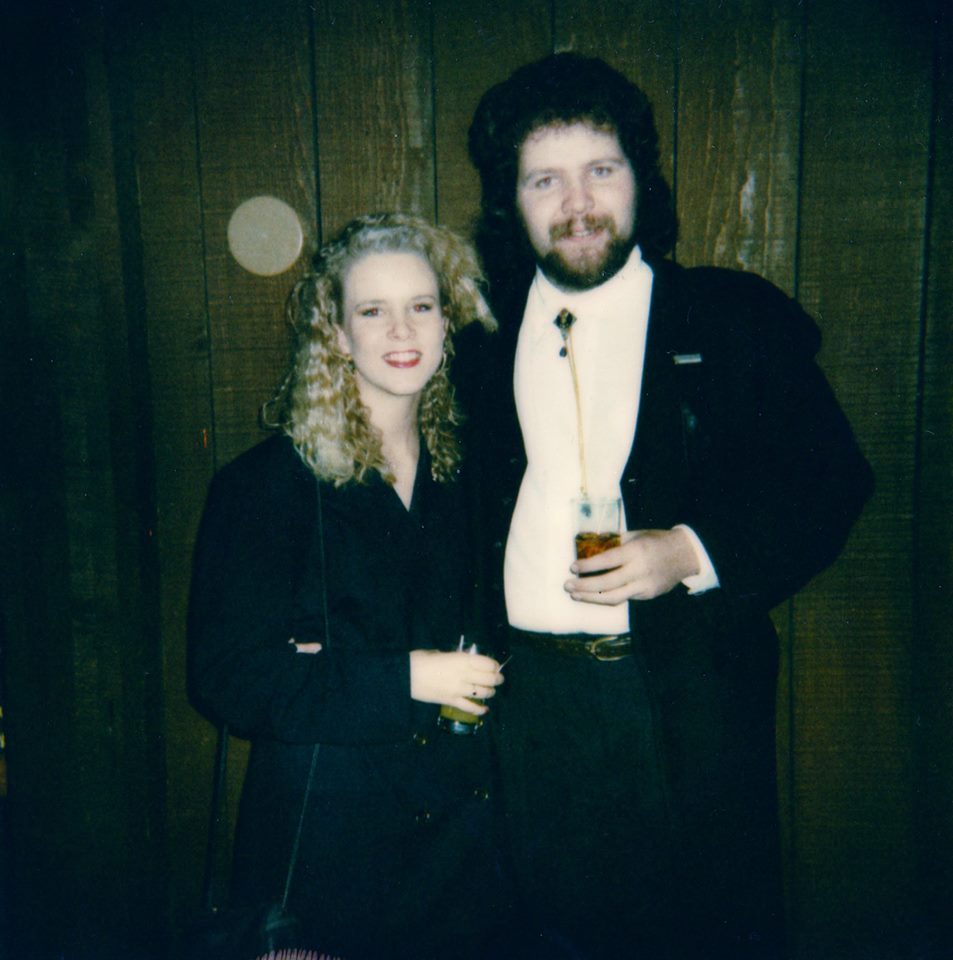
(ABOVE: Andrea and I dressed up for the 1992 Dynamix Christmas Party)
Michelle, Ma Belle
Of all my many extra curricular friendships that I made during my days in Eugene, however, no others can quite compare to the one that began in the middle of an alleyway as I nearly ran over a flaming hibachi with my car.
I’d just returned home from work. I hadn’t been paying much attention because the alleyway was usually deserted, and I certainly wasn’t used to people setting fires in the space that divided my apartment complex from its nearest neighbor. Fortunately for me – and for the grill’s attendants – I managed to quickly adapt.
Getting out of my car, I noticed there were two people. The first was a skinny, hawkish-looking fellow perched on a half wall that semi-partitioned the alleyway. He was talking and laughing, his attention focused on the woman who tending the fire. Her back was to me, but on hearing me getting out of my car, she turned to give me a studious examination.
She was dressed in leopard spot tights. I think that was the first thing that stood out to me. In a town known that was known for its patchouli and sandalwood scented leftover hippy vibe, Michelle still had a knack for standing out. Over her tights she sported a black leotard top and a black leather motorcycle jacket with a hand painted martini glass on the back. A long braid of blonde hair hung over her shoulder, pulled back from her pale cover model face that had been set afire with the fiercest red lipstick ever put in a tube.
“Heeeeeeeeeey!”
She was waving. Given her enthusiasm, at first I wasn’t even sure she was waving at me, or some strange mystery person lurking behind me. She remained persistent. “Come ere!”
Dutifully I slunk over. Generally my policy is do whatever beautiful women want me to do, and I at the very least had to find out who this colorful individual was.
“What’s your name?” she asked.
“Neal.”
Her eyes flew open with surprise. “Nettles?!”
“What?”
“Did you say your name was NETTLES?!” From her delighted expression, I could tell she thought a unicorn had sprung into existence before her. I ruminated on whether or not I should correct her, but before I could say anything, she’d already moved on to the next order of business.
“Would you like some Sangria, Nettles?”
She motioned to her friend. He was guarding a plastic pitcher full of the stuff and waving a martini glass demonstratively. I waved him off as politely as I could, hoping not to offend my new neighbors.
“So, are you celebrating, or just camping?” I asked.
“We’re celebrating Paul!” she announced brightly.
I looked at her friend. “Congratulations,” I offered, but he shook his head dolefully at my ignorance, continuing to sip his own drink.
“Oh, that’s not Paul,” Michelle corrected me. She did a half courtesy, sweeping a demonstrative hand towards the sky. “THAT’S Paul!”
For a moment I scanned with confusion the general direction in which she’d pointed, looking for any sign of someone in a window, or someone on a balcony. Briefly I considered the possibility she was talking about someone who’d died, but then at last my eyes latched on to the object of their impromptu fete.
Near the peak of the roof of the nearby complex, a large, round, painted portrait had been affixed to look down over the denizens of our shared alleyway.
“It’s Paul-On-The-Wall,” Michelle announced proudly. “We just hung him.”
Michelle then proceeded to explain that they’d found the portrait, and felt like he should have should have a place of honor, and the roof was as good a place as anywhere. I couldn’t really argue, though I half wondered how long the property management people would leave the portrait be. As it would turn out, he’d hang there much longer than I’d expected on that day.
Over the course of the next few months, I’d spend a lot of time hanging with my good friend Michelle. She was a local artist, known for her off-beat pieces. She’d paint bowling balls and martini glasses. She loved the word poop. She’d adored retro art from the 50s and 60s, and she shared my twisted sense of humor and my particular love for the writing of Douglas Adams. We’d hang out and talk philosophy, and ethics, and she’d try to convince me about the evils of fructose. But she also had a deeply introspective side to her as well, and she often warned me about “selling my soul to the machine.” Before she’d become the free spirit I’d come to know and love in Eugene, she’d worked as a graphic designer in advertising in Los Angeles. She’d tell me horror stories, and warn that if I’d met her back then, I wouldn’t have liked her, that she didn’t like that side of herself either. She’d come back home to Eugene to rediscover herself, and thankfully she’d found a way to make peace with who she was both as a person, and as an artist.

The Eugene Salon
As I’d begun to settle in to my new home in the Pacific Northwest, my old high school friend and former New World Computing collaborator Ron Bolinger had made some big changes in jobs of his own. Resettling in Sunnyvale, California to join S.S.I. for their D&D project Dark Suns: Shattered Lands, Ron had purchased himself a motorcycle and had begun to make fairly regular trips up from the Bay Area to visit me. As guilty as I’d felt in leaving him behind in LA, I was glad to see that he was enjoying his new life in the city by the bay. When we’d been in college, he’d become fan of the beat writers like Kerouac, and Ginsberg, and Burroughs, and we spent many hours as he tried to explain to me what bop prosody was, and I’d make up gibberish psychobabble poems that amused us both for entirely different reasons. Now that he could walk the streets of San Francisco, and could haunt City Lights Bookstore as his heroes had before him, I felt like he’d really found the home he’d been looking so long for, and he seemed more contented than I’d seen him in a very long time.
Not infrequently when Ron was around, so was Michelle, and the weirdness that always present with either of them alone would become a perfect storm of creativity and oddity. Temporarily my apartment would become a kind of travelling Parisian Salon, but rather than Beaux-Arts, we’d waste the weekend talking about beat poetry, pop art, and things that hang in the air in the exact way that rocks don’t. If any of us had taken any of it seriously, the air would have been thick with pretension, but we were all young and absurdist, and the only people we had to prove anything to was ourselves.
At the height of our ridiculousness, I can recall one party in particular in which we’d all been passionately discussing Byron and Shelly, and in a fit of romantic zealotry, we decided that we all needed to go write poetry in a graveyard. (It should be pointed out that my guests had had quite a bit of Sangria. I, however, had had about three bottles of Mountain Dew too many. I did, however, as a joke try to slug down an entire Martini glass full of Sangria in one shot…with almost fatal consequences to myself. My airway completely closed for almost a full minute. Thus ended my last experimentation with drinking.) Of course given that we were MODERN poets, it was not adequate that we take pens and paper with us, but decided to haul an Underwood typewriter with us that Michelle happened to have in her apartment.
Now as the luck of geography would have it, a cemetery was not a tall order for us. Although “old graveyard within walking distance of apartment” hadn’t been on my list of qualities I was explicitly looking for when I was home hunting in Eugene, discovering that the Old Pioneer Cemetery wasliterally across the road from the apartment I liked had sealed the deal. Since moving in, I’d frequently made a habit of spending time among the long dead, and I’d revived a high school habit of sketching some of the older, more elaborate headstones. Often, I found I wasn’t alone there because the students from the U of O’s music department would frequently go and practice there thanks to its convenient location behind their building. (Incidentally, grave robbing in Betrayal at Krondor as a thing you could do? Yeah, that was me. Blame it on my spending so much time in this cemetery.)
As time passed, our little group slowly dissolved. Not out of lack of love for each other, but because of the demands of careers, life, and other pressures. Ron would move off to Texas for bigger and better things and ultimately a shot at being the co-owner of a start up game company. Michelle would continue to grow her talents and her portfolio of art, though she’d continue to pursue unconventional venues for promoting herself, including hijacking a Eugene Laundromat for a what we’d call today a flashmob art auction. And as for me, I’d find less and less time to spend with friends away from the office as the production demands of Betrayal at Krondor ramped up, and ultimately ate my life.
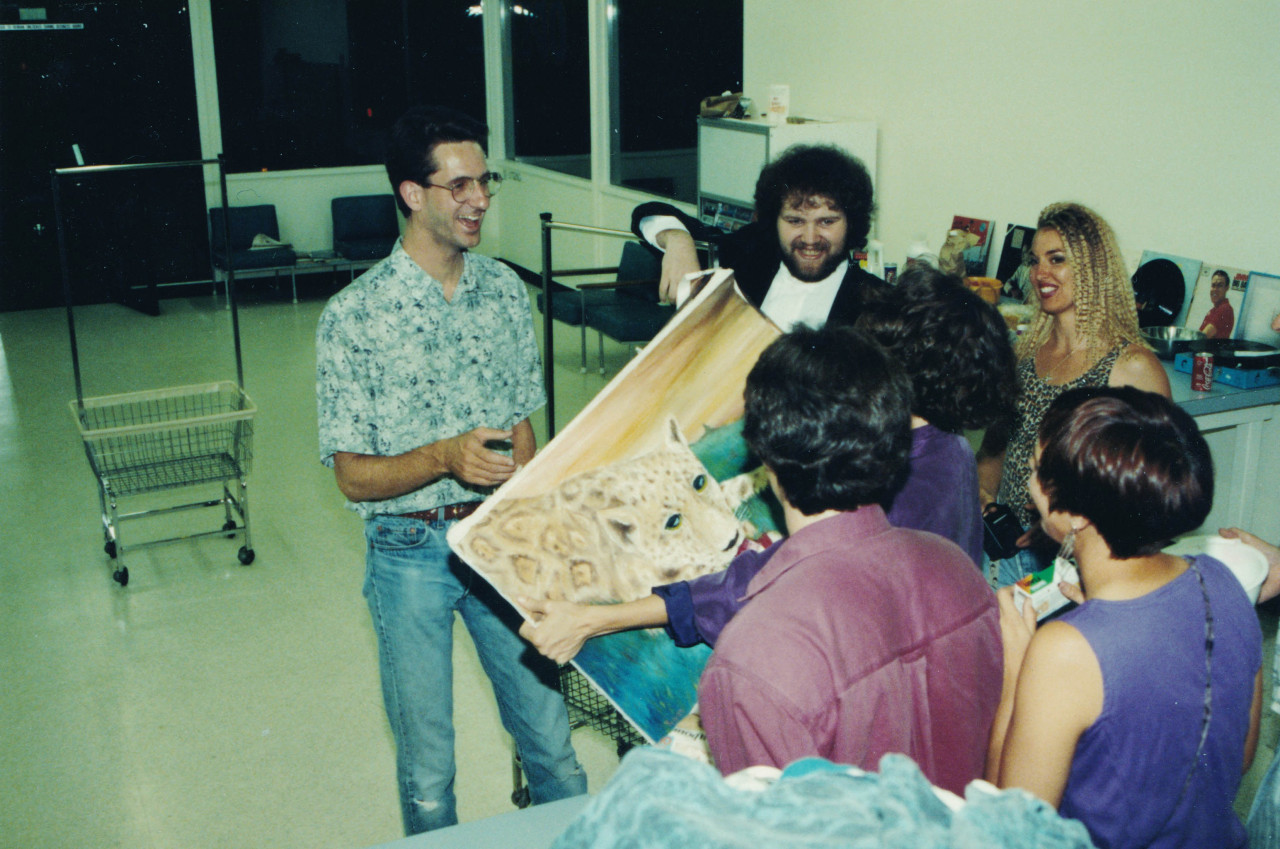

(Scenes from Michelle’s infamous Art Auction in Eugene. TOP PHOTO: Me in top center, Michelle to the right of me. BOTTOM PHOTO: Me at left. To far right, Tim McClure, assistant designer on Betrayal at Krondor, sits atop a washing machine.)
EPILOGUE
After the completion of Betrayal at Krondor, the cancellation of the sequel, and my move away from Eugene, I regrettably lost contact with Michelle. I’d let someone slip away who’d been a very dear friend, and who had been a very nearly constant part of my life away from Dynamix for most of my time in Eugene. I’d grieve about the loss of that friendship for years…
…until a July afternoon in 1998. As was part of what was becoming my annual custom, my wife Jana and I were doing a crawl of the floor at ComicCon International. I was pouring over the goodies, searching for my usual fix of anything Doctor Who, Star Trek, or Call of Cthulhu related, hoping beyond hope to find something I couldn’t find elsewhere. As always, the floor was packed with a sea of people, and moving through them was like swimming in tar. Undeterred, we worked through the masses, determined to make a clean sweep.
What happened next seems like something that could only happen in a movie.
In an aisle that was about as densely packed as you can imagine without sardines being involved, there was a sudden ripple in the crowd. All at once it was as if everyone had received a command and they stepped aside, parting like the red sea. And there…at the end of the aisle…
Michelle.
For a long moment, I remember both of us stopping in our tracks, both completely disbelieving what we were seeing. It had been five years since we’d heard or seen one another, and it seemed utterly impossible that we’d randomly meet in another city so far from where we’d known each other.
Over the din of ComicCon, I heard one word.
“Nettles!”
In very short order, we caught up on what had gone on in each other’s lives in the intervening years. Moves. Relationships. Our creative endeavors. We were so happy to reconnect, and to remember those very special years of our lives, and to finally introduce our significant others to people they’d already heard so much about.
I am so very proud of my friend, and of all that she’s accomplished. Jana and I are honored to have an original piece of her artwork hanging now in our living room, as it has for several years. Over time Michelle’s only become a stronger and stronger artist, and she’s had exhibitions in several galleries, and had her work hung alongside other artists whom I know she’s admired over the years.
If you’d like to see some of her retro pop art for yourself, please visit her online gallery, and support an indie artist who means a great deal to me.
















Betrayal at Krondor: Remastered - FAQ
Since I’ll be releasing the first video sneak peek at Betrayal at Krondor: Remastered this week, thought I’d share a quick summary about what the project is (and is NOT), and manage some of the expectations that people have about what I’m working on. Really appreciate all the love and support from all the fans of the original who have been filling up my Facebook page with questions and commentary so far, and I hope to keep the good stuff coming. All I ask is patience. I’m one man, and the original took fourteen or so of the core members over two and a half years to build, so…forgive me if this takes some time.
What Is Betrayal At Krondor: Remastered?
Betrayal at Krondor: Remastered (or BAK:REM for short) is an attempt to resurrect the core systems – as well as the general look and feel – of the hit, award-winning role-playing game Betrayal at Krondor. Using the newly released Amazon Lumberyard Game Engine, I intend to build as much of the original engine as I can with as little outside help as possible, not only as a test of the general usability of this very cool new tool, but also as a self-guided, intensive exercise to refresh some of my level design and scripting skills. As a bonus, fans of the original game get to see what a sequel to BAK might have looked like by fusing elements of the original together with more modern technology.
What Is Betrayal at Krondor?
Betrayal at Krondor was a role-playing game developed at Dynamix and released by Sierra Online in 1993. While based on the books and universe of New York Times Bestselling author Raymond E. Feist and Midkemia Press, the plot, dialogue, and game design were all created by our team at Dynamix, lead by John Cutter and myself. The game was extraordinarily successful, and won numerous best RPG of 1993 awards, and was inducted into the Computer Gaming World Hall of Fame. It is often cited by hardcore RPG afficinados as one of the best RPGs of all time (their words, not mine).
Will Betrayal at Krondor: Remastered Be a Total Remake of the Original?
No. Far from it. My primary focus with this project will be on the reconstruction of the game systems, and to a limited degree, a tiny fraction of the original game content. My plan is only to recreate the first Chapter and the first Zone of BAK, which might only represent 3 or 4 percent of the total content of the original. This should be sufficiently adequate to demonstrate and test the functioning of all the core systems, and will still offer at least a hour or two of gameplay.
Will BAK:REM Be Commercially Released?
No. Let me say this again to make this clear. NOOOOOOOO. This is a not-for-profit, self-educational project. I will never sell anything with the Krondor name on it, or with any of the content based in the Midkemia universe unless otherwise given express permission / license from Raymond E. Feist and Midkemia Press. BAK was in their playgrund, and they let me play there for a few years.
Why Not Rebuild The Entire Game?
First and foremost because the Midkemian universe doesn’t belong to me. Yes, I created a very big corner of it, as well as several characters, and a significant number of chapters in its history, but again, it all belongs to Ray and the good folks over at Midkemia Press. It’s one thing for me to be noodling around on a small non-profit project like this, but a full remake (and especially a commercial venture) would be a very big violation of their copyright. I don’t like getting sued. Really, I don’t. Also, I’m a writer, and even if I weren’t worried about litigation, I’d still want to be respectful of Ray’s rights. He’s been a good guy to me, and I don’t want to cause him any worry or irritation.
A more relevant point is that currently, all things Midkemian are tied up, at least in terms of “official” computer games. When Kickstarter exploded a few years ago, a lot of folks suggested that we Kickstart a modernized reboot, and I got hold of Ray to discuss it. Unfortunately he has a contract that ties up the rights to Midkemia as a gaming property for a while, and every time I’ve run into him since, I’ve been told the same thing. Legally there’s just no recourse to build an official, full remake of BAK at this time. Maybe that will change in the future, but at this time, BAK:REM is as far as I’m willing to venture.
Is Raymond E. Feist Involved?
Not at all.
Are Any of the Other Original Betrayal at Krondor Team Members Involved?
Not officially, no. Most of them have other full time projects to occupy them, and as I stated earlier, I’m hoping to build as much of this as possible on my own. Not for lack of love for those guys, mind you. I’d take a bullet for just about any of the people who I was privileged enough to work alongside on BAK. Most of them are aware of what I’m doing, however, and several have asked to be allowed to play with releases and to test it as I move forward. I am in regular contact with John Cutter, and I’ll likely be picking his brain on a few things as I go along, so be assured that this will be coming from the same creative energy that created the original.
Will It Be Released To the Public?
This is still to be determined, largely pending a discussion with Ray about if he’s okay with this demo being released into the wilds of the Internet. I’d certainly like to share it with everyone, but I have to make sure that public distribution won’t be a bridge too far for him. That said, I will be posting videos of the game in action as I make progress, as well as blogging here about what I’m doing. I’ve also been told by Amazon’s marketing department that they want to publicize how I’m using their engine, so be sure that you’ll be seeing and hearing a lot about it, one way or the other.
When Do You Expect To Be Done?
Quick answer: Not anytime soon. Longer answer: There are a lot of unknowns involved with this project, not the least of which is not knowing what I don’t know. Typically when I’m working on a game, I’m being supported by a full team of programmers, artists, assistant designers, testers, and other Really Helpful People who can get me out of a ditch when it’s needed. With this one, I’m in the woods and on my own. So far it’s lots of fun, and I’m generally enjoying myself, but there may be things out there with sharp pointy teeth that want to eat old, weird game designers. We’ll see what we see.
Why Betrayal at Krondor?
When I was thinking about teaching myself to use the new Lumberyard system, I decided that the best thing to do would be to try and build something in particular. I get bored by tutorials. I could have created an all new design, but considering that I’m also trying to learn a new game engine at the same time, I opted to minimize the risk. I went with a design I already know (and that I know was fun), so I could concentrate on how I implement it with an entirely new set of tools.
Another advantage, of course, is that I have lots of you out there who loved BAK, and I get letters, and posts, and comments from you on an almost daily basis. A lot of folks are crazily passionate about the original, and they’ve been desperately poking me for years for remake / reboot to whet their appetite for more Krondor. While I can’t give them the full-fledged thing, I can at least give them this peek at what a slightly updated BAK might look like. That’s helpful to me because I know people will be paying attention, and I know that I won’t be doing this completely in a vacuum. It’s always easier when you know there are already people out there who are interested in what you’re working on.
Why Amazon’s Lumberyard Game Engine?
There are several reasons that I chose to jump on the Lumberyard bandwagon, but first and foremost it was because of their awesome visual scripting system. For designers like myself, it’s a godsend. It much easier to see what you’re trying to accomplish with a flowchart that is ALSO a script, and it’s much easier to visually see where things aren’t working. Add that to the fact that you’re aren’t tearing your hair out trying to figure out where you forgot to close a LUA brace, or you didn’t put a semi-colon, and it works out to be a much more rewarding experience, and at least for me, a much faster way to iterate.
Another plus is that Lumberyard is based on the Crytek CryEngine. When Far Cry first came out years ago, it was easily one of the prettiest games around, and as the engine has continued to develop, it’s become a really solid platform to work on. In learning Lumberyard, I’m also learning the CryEngine at the same time, so it’s a two for one deal for me. In time Amazon intends to build and develop their own systems that will diverge from Crytek, but it’s a great point at which to learn both systems.
Lastly, and not entirely unimportantly, is that I know the head of the Lumberyard project because we worked together on a project for Cavedog Entertainment. So that might have had something to do with it as well.
What Are You Going To Do With the Engine Once You’re Done?
It’s safe to say that I’m not doing this entirely for the sake of Krondor nostalgia, as awesome as its fans are to me. Once BAK: REM is done, and I’ve had a change to thoroughly test the systems, I’m planning on yanking out all the Krondor-specific content so that I can replace it with another IP – one that belongs to me. What that IP is, and my long-term plans for it, I’m leaving for a future reveal. Suffice to say, if you liked BAK, you should love what will be coming next from this author / system / engine.
Can I Help?
When it comes to the design and scripting, I’ll be handing all of that myself, as previously stated. If, however, you would like to contribute high-resolution 3D models based on houses or items from the original BAK – I certainly won’t stop you. If you’re interested, I’ll try to get you the specs for exporting your FBX models from the platform of your choice. Also, if you loved the music of the original, but would love to do your own, fully orchestrated covers – I also won’t stop you there either. If you just want to put some money in the tin can to keep me fed while I try to do all this lunacy on my own, I can send you a donate link as well. What I’d really love help with most of all, however, is just that you share the link to this blog, as well as links to the development videos as I post them along the way. I’m trying to develop interest in the system, and also for the game that comes after, and that will be easiest if you help me spread the word.
Will You Sing “Northwarden Pigs” For Me?
Be careful what you wish for.








Once BAK: REM is done, and I’ve had a change to thoroughly test the systems, I’m planning on yanking out all the Krondor-specific content so that I can replace it with another IP – one that belongs to me.
 . While the setting of Midkemia was interesting and all, I love BaK more for its systems and writing.
. While the setting of Midkemia was interesting and all, I love BaK more for its systems and writing.
The pimp would make offers. I’d tell him I really just wanted to eat a sandwich. He’d ask if I wanted to eat something else. I’d tell him not even on a bet.
![The Year of Incline [2014] Codex 2014](/forums/smiles/campaign_tags/campaign_incline2014.png)
In the first Betrayal at Krondor: Remastered demonstration video, designer Neal Hallford walks through the dialogue and keyword systems, the first to be implemented for the recreation of this classic RPG.















Amazon Lumberyard and the Hunt For the Perfect Game Engine
I’m going to share a secret with you about the game development industry. It’s going to ruffle some feathers, particularly with the Man, or the Status Quo, or the ever-so-popular in this election cycle – The Establishment. No this isn’t about The Bern or The Donald, I’m talking about that elite class of Illuminati who actually make all the important decisions that affect every single game designer who has ever walked the planet. So are you sitting down? Ready for the revelation? Here it goes….
Game engines are typically created for the WRONG people.
Now before you go all #GameDesignersMatter or #GamerGate on me, let me clarify that I’m not talking about sexes, races, religious affiliations or whether or not the people using the engines can dual class both in swordsmanship and underwater basket weaving. What I’m suggesting rather is that there is a tendency for coders to build game engines that are primarily friendly to, well, coders. It doesn’t make them evil or bad people. And it’s not like they have a corner on creating things that are difficult or impossible for other people to use.
If you’ve been working in the industry as a game designer for any significant length of time, at some point you’ve created some system or some interface that was nigh on impenetrable for other people to understand. It’s just human nature. We create in our own images. But when it comes to making a tool like a game engine, the most important thing should be that it’s actually useable by the people who touch it every day. And it shouldn’t simply stop with being functional. It should be inspirational, intuitive, empowering, exploratory. God help us, it should be FUN to mess with. Why? There’s one simple reason. Outraged, frustrated game designers don’t make games that anyone wants to play.
Understand that I’ve been at this for a very long time. I cut my game development teeth on hand retyping BASIC and Assembly code from spiral bound code books into my Atari 400. It was hardcore. Peeking, poking, and registry numbers. If you’re someone like me who borders on innumeracy, this was just short of trying to learn Hungarian without an actual English / Hungarian dictionary or a grammar book. I stuck it out because I loved games, and I desperately wanted to make them. Back then, there was no dividing line between programmer and designer. They were one and the same. But for all my attempts to turn myself into a Borg and internalize all that code, I never BECAME a programmer. I understood some of how they thought, and occasionally I spent some time in their cubicles, but when it came time to take my ideas and turn them into games, I felt like I was being asked to hammer nails through a board using an ice pick. I simply hadn’t been given the tools that were designed for me.
Flash forward to just a few weeks ago, and the announcement that Amazon had released a new game engine. There were a lot of things about the announcement that intrigued me, not the least of which was that it would be free to use (and to deploy) if you weren’t looking to make a multiplayer title. That meant if I wanted to, I could make a massively single player game like the earliest titles on my resume, and I wouldn’t be on the hook to Amazon while I noodled around with it. That was a major plus right there. Forget Free to Play. I’m all about Free To Learn.
Another advantage was that it’s a tool owned by Amazon, unquestionably the largest distributor of darn near EVERYTHING there is to distribute. Further, as the owner of the largest cloud service around that’s already in use by half the game companies on the planet…that was another win. With Amazon as a partner, I reasoned that there was a good chance that they might be able to do for indie game devs what they’d already done for indie authors. I downloaded the toolset and dove in. What I hadn’t expected was to find a tool that was almost exactly what I’d been looking for since I’d imagined myself as the next David Lightman. (Yes, I made a War Games reference. Sue me. It was all about Ally Sheedy anyway.)
Although you read a lot about Lumberyard’s inheritance from Crytek, and how beautifully and realistically it renders the game world, what doesn’t get as much press is that it comes with a visual scripting system. For the unitiated, what this means is that users are able to create “scripts” not through an intermediary scripting language like LUA, but through the creation of flowcharts that exist within the game engine itself. If you want to create a combat system, or an inventory system, or if you want to make a particularly complex way of handling character dialogue, you visually wire up various “nodes” that behave like script functions in order to create the required logic. And you do all of this without ever having to worry about whether or not you closed your curly brace on one of ten thousand lines of LUA code. This is powerful, powerful stuff, and a major step in the direction that I believe all game scripting must eventually take. By stripping away the non-intuitive layer of abstraction that a typical scripting system imposes, the Flow Node approach allows designers to focus on the actual functionality of their idea without getting bogged down in scripting minutia. It empowers designers to think like designers rather than programmers, and that’s a very good thing.
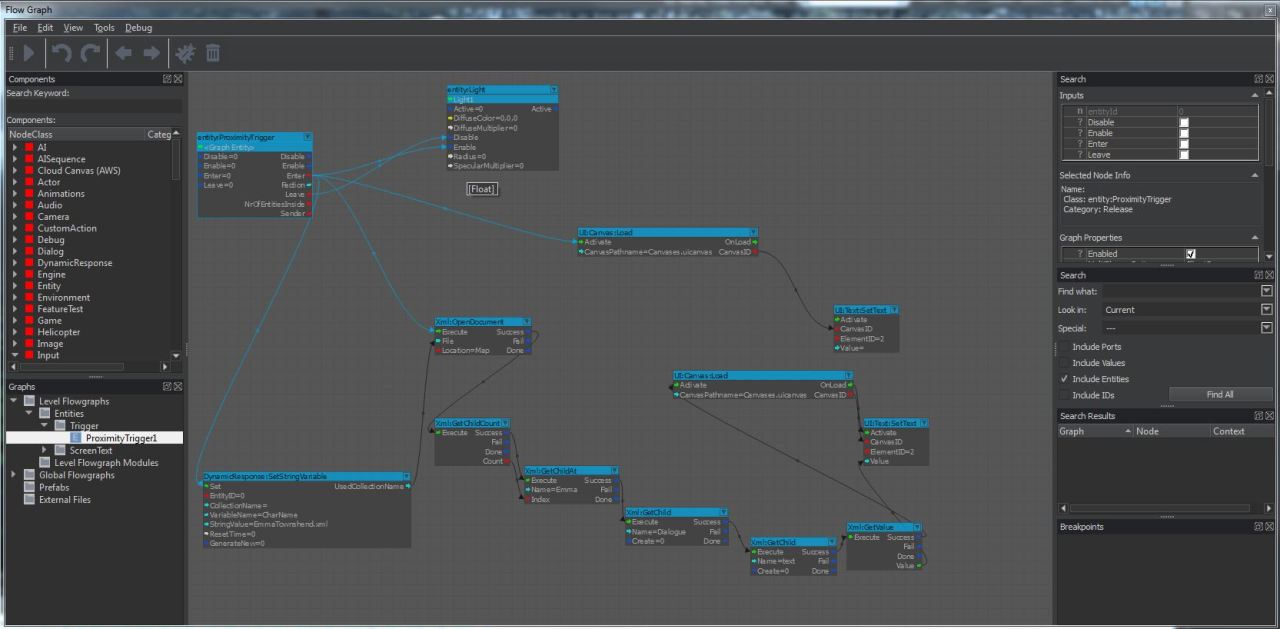
In order to test out the engine, I realized I could have gone crazy and tried to design the most insanely over-the-top game ever imagined, just to see how far I could push the engine. While it might have been fun, I also realized that I didn’t want to spend weeks or months coming up with a whole new idea, then spending weeks or months trying to implement it on a system with which I was wholly inexperienced. If it turned out well that would be one thing, but if it went poorly, I wouldn’t be entirely sure if the fault was in the game idea, or in my lack of understanding of the engine. To minimize the risk, I decided that I’d only try to reinvent ONE wheel of my motorcycle at a time. I’d teach myself to use the new tools, but I’d use an existing, already successful design as my template for testing out Lumberyard’s capabilities. It was almost a no-brainer that I’d try to resurrect Betrayal at Krondor.
For those of you who might not recognize the name, Betrayal at Krondor was a hit role-playing game that I was lucky enough to co-design for Dynamix back in the early 1990s. Based on the novels of New York Times Bestselling Author Raymond E. Feist, it was a gigantic hit for its time, won numerous awards, and was inducted into the Computer Gaming World Hall of Fame. Despite my having worked in the industry for twenty-six years now, it remains as one of the most beloved things I ever worked on. I get letters, and direct messages, and social media comments on an almost constant basis asking if and when I might be working on sequels, reboots, remakes and the like. I saw this as an opportunity that would be a win-win scenario for everyone involved.
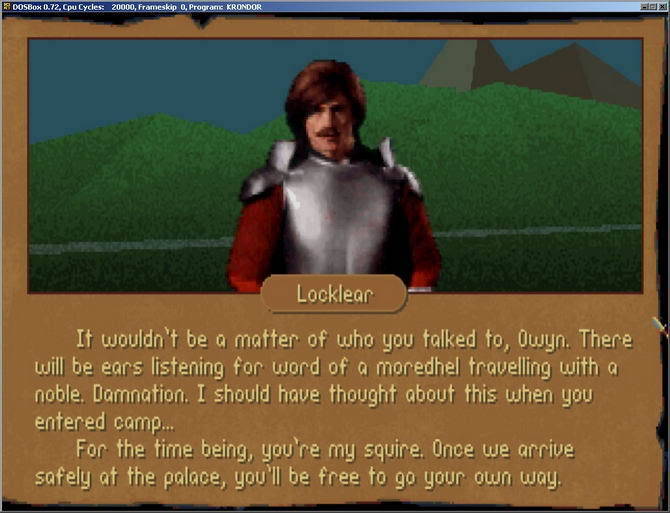
Several weeks in this has already been a terrific adventure. It’s been remarkable to reconnect with fans and my co-workers from the original game and get their feedback. The first release of a screenshot from Betrayal at Krondor: Remastered caused near hysteria a couple of weeks back as several people started wanting to know release dates for the end project, unaware that at least for the moment, this is purely a self-education experiment rather than a full remake. Given that the original took fourteen of the core members of the project over two and half years to create, I don’t currently have plans to make the whole thing on my own. That said, what Lumberyard has already shown me is that I have a great deal more power as an individual designer with this tool than I ever would have had back in the day. Things I would have had to ask a programmer to do previously are now things I can do for myself, and I have a lot more flexibility in tinkering with an idea when I can control both the content and how that content is delivered through the game system.
The right tool makes all the difference in the world.
When Do You Expect To Be Done?
Quick answer: Not anytime soon. Longer answer: There are a lot of unknowns involved with this project, not the least of which is not knowing what I don’t know.
















Getting Something Off My (Moredhel) Chest
One of the fun parts of the Betrayal at Krondor: Remastered project is that it’s allowing me to indulge in one of my side hobbies – messing around with 3D modeling. Now as I tell everyone, I’m not really a 3D modeler. I’m slow, I’m clunky, and I don’t always take the right path to getting to the final product that I want. That said, I really enjoy doing it.
My weapon of choice these days for this little hobby is Blender, whose initial appeal was that it’s free. It has both its ardent supporters as well as its vocal detractors, but if you’re patient with it, you can get really nice results (especially now that the Cycles Rendering is built in.) Now admittedly the learning curve is steep, more so if you’re already familiar with Maya or Max (you’ll have to unlearn a few of the ways you already do things), but now that I’ve got used to the funky way it does certain things, it’s not that difficult to use. You can check it out for yourself at http://Blender.org.
The next big task I have on my agenda for the Betrayal at Krondor: Remastered project is recreating the moredhel puzzle chests from the original game. These were special treasure chests scattered around the game world that required the player to solve puzzles before they could open them up. Opening chests at first requires – well – a chest to open so I’ve been busy creating the asset that I’ll be using in the game. (Strangely enough puzzle chests aren’t an asset that’s readily available out there on the interwebs.)
Still some work to do yet on bringing these beasties to life, but thought you might enjoy a few screenshots of my work in progress on the model.
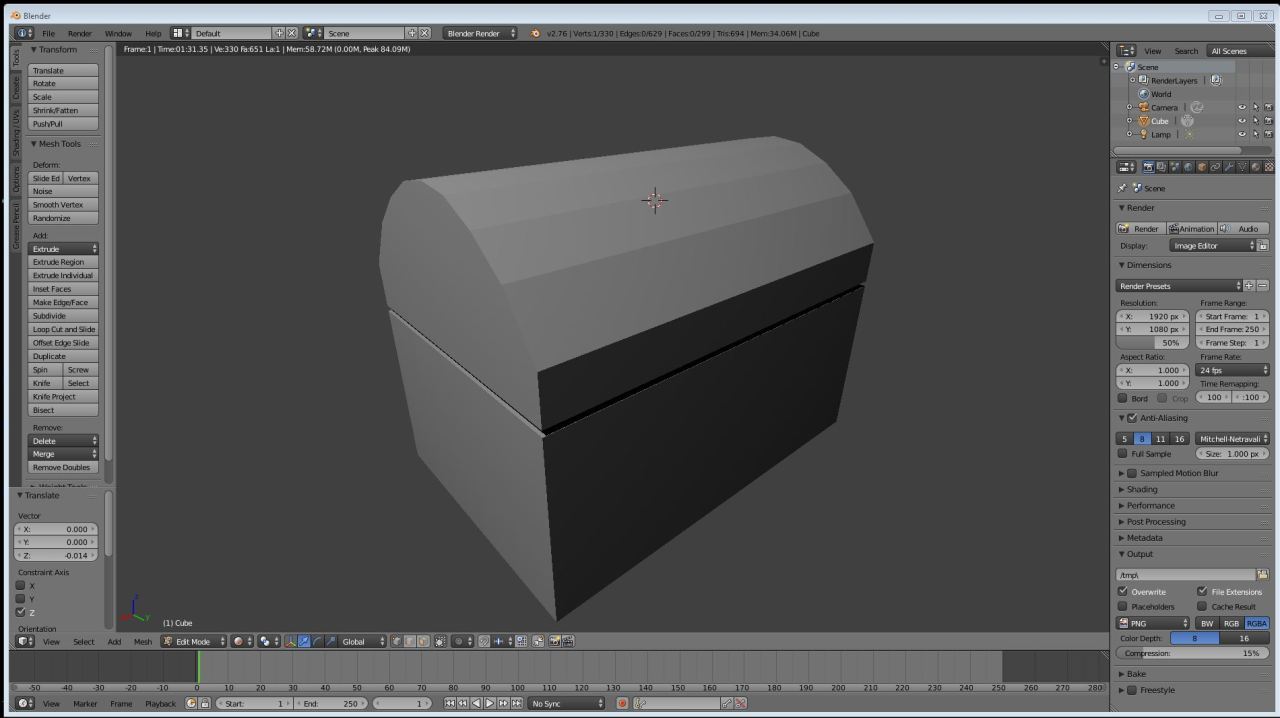
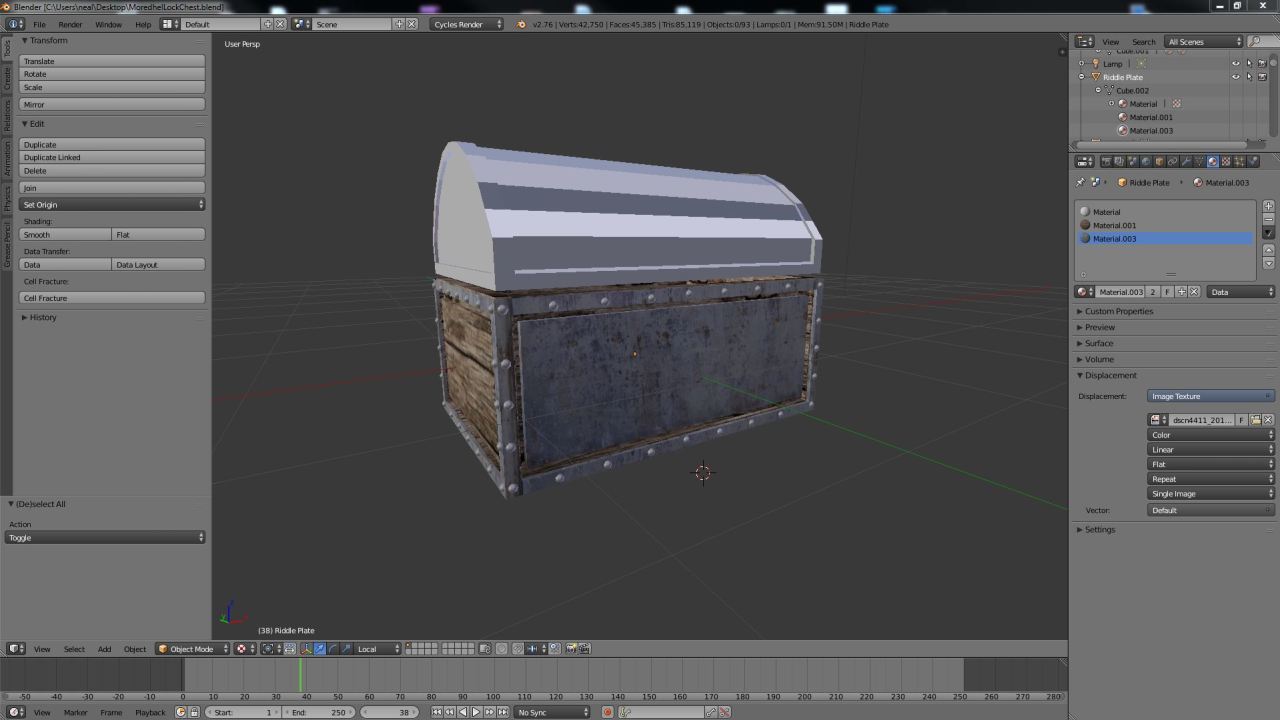
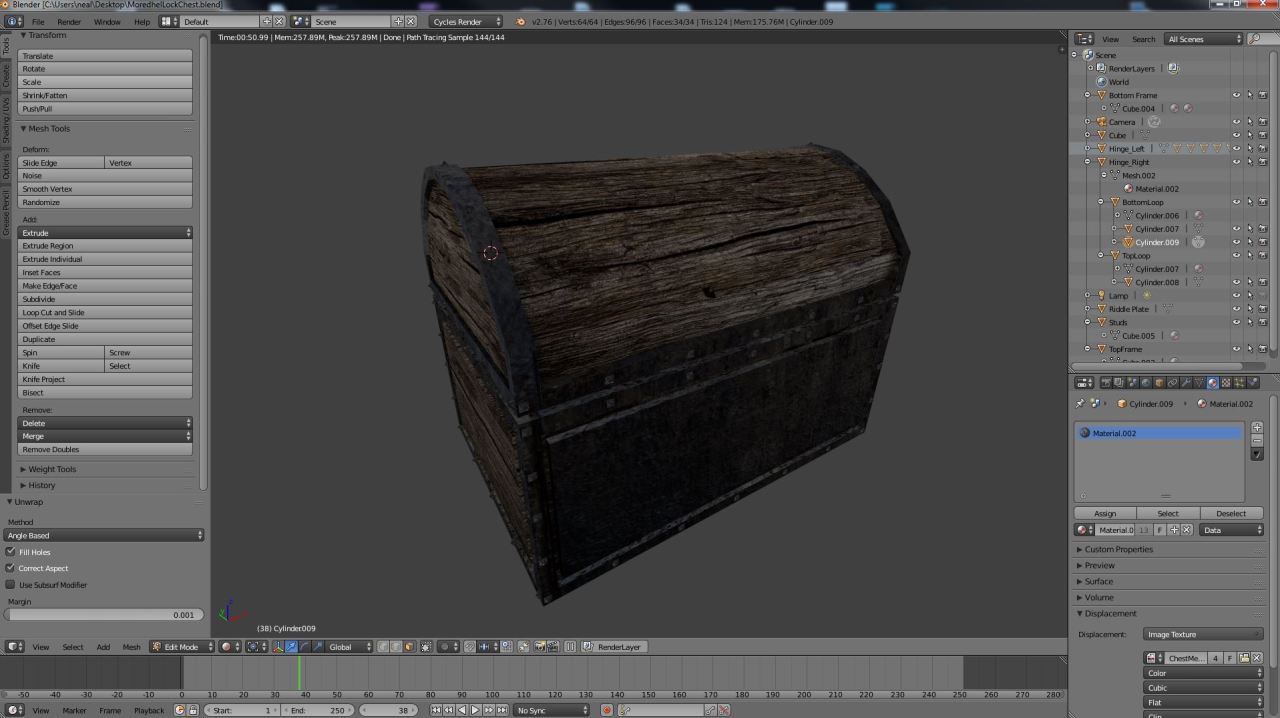
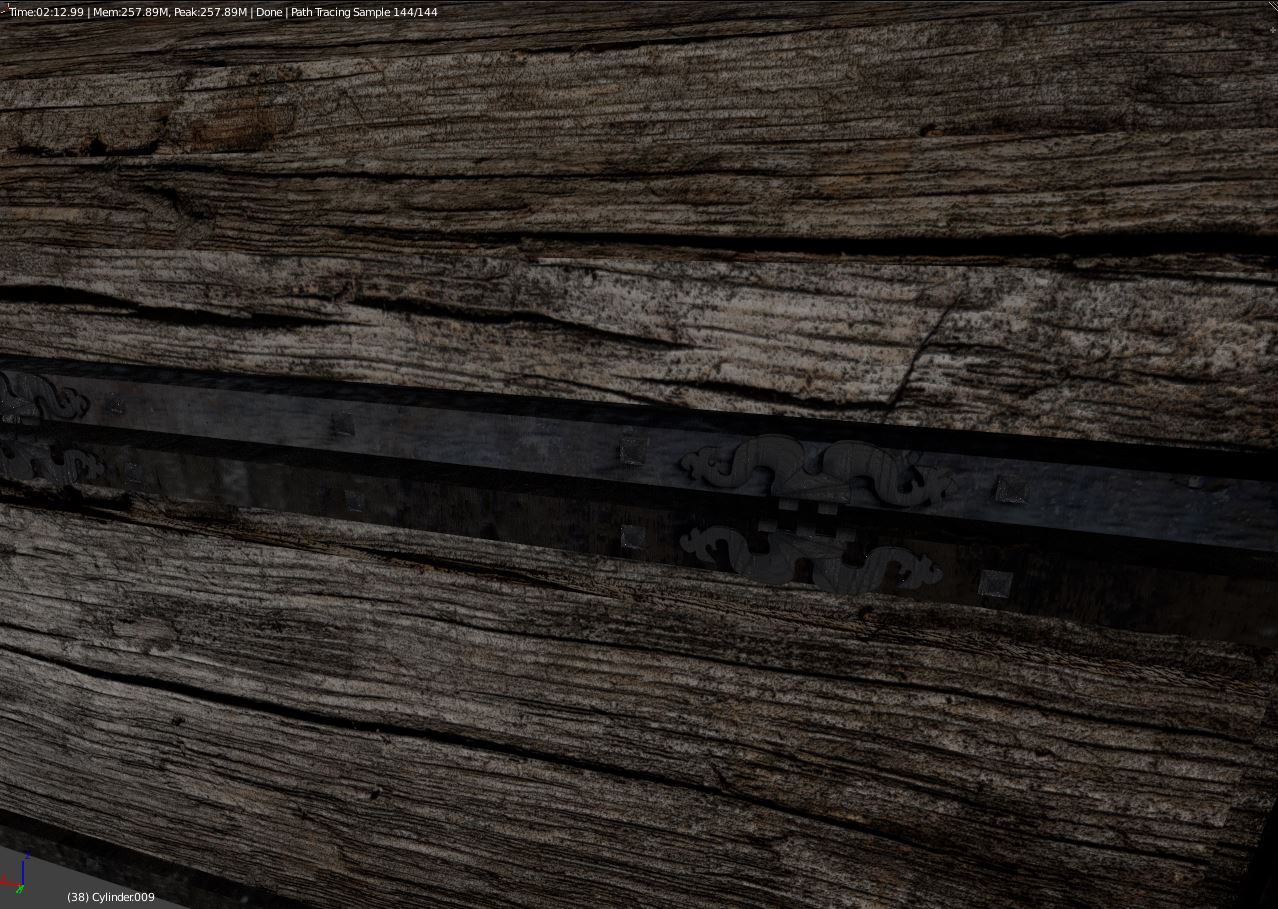

Visual scripting systems have been in UE and Unity (add-on) for quite a while and in numerous other engines as well. I personally can't stand them, not even for prototyping, but I understand the appeal. I just think there's a glass ceiling in what you can achieve with them and with increasing complexity, they become less and less intuitive, meaning, losing their initial strengths, so the designer might face other obstacles than having to think like a programmer.
Amazon Lumberyard and the Hunt For the Perfect Game Engine
The first release of a screenshot from Betrayal at Krondor: Remastered caused near hysteria a couple of weeks back as several people started wanting to know release dates for the end project, unaware that at least for the moment, this is purely a self-education experiment rather than a full remake. Given that the original took fourteen of the core members of the project over two and half years to create, I don’t currently have plans to make the whole thing on my own.

Amazon Lumberyard and the Hunt For the Perfect Game Engine
The first release of a screenshot from Betrayal at Krondor: Remastered caused near hysteria a couple of weeks back as several people started wanting to know release dates for the end project, unaware that at least for the moment, this is purely a self-education experiment rather than a full remake. Given that the original took fourteen of the core members of the project over two and half years to create, I don’t currently have plans to make the whole thing on my own.
Did anyone else get the feeling after reading this that this little "experiment" may actually become something more?

What Are You Going To Do With the Engine Once You’re Done?
It’s safe to say that I’m not doing this entirely for the sake of Krondor nostalgia, as awesome as its fans are to me. Once BAK: REM is done, and I’ve had a change to thoroughly test the systems, I’m planning on yanking out all the Krondor-specific content so that I can replace it with another IP – one that belongs to me. What that IP is, and my long-term plans for it, I’m leaving for a future reveal. Suffice to say, if you liked BAK, you should love what will be coming next from this author / system / engine.
Amazon Lumberyard and the Hunt For the Perfect Game Engine
The first release of a screenshot from Betrayal at Krondor: Remastered caused near hysteria a couple of weeks back as several people started wanting to know release dates for the end project, unaware that at least for the moment, this is purely a self-education experiment rather than a full remake. Given that the original took fourteen of the core members of the project over two and half years to create, I don’t currently have plans to make the whole thing on my own.
Did anyone else get the feeling after reading this that this little "experiment" may actually become something more?
 What Are You Going To Do With the Engine Once You’re Done?
What Are You Going To Do With the Engine Once You’re Done?
It’s safe to say that I’m not doing this entirely for the sake of Krondor nostalgia, as awesome as its fans are to me. Once BAK: REM is done, and I’ve had a change to thoroughly test the systems, I’m planning on yanking out all the Krondor-specific content so that I can replace it with another IP – one that belongs to me. What that IP is, and my long-term plans for it, I’m leaving for a future reveal. Suffice to say, if you liked BAK, you should love what will be coming next from this author / system / engine.

Amazon Lumberyard and the Hunt For the Perfect Game Engine
The first release of a screenshot from Betrayal at Krondor: Remastered caused near hysteria a couple of weeks back as several people started wanting to know release dates for the end project, unaware that at least for the moment, this is purely a self-education experiment rather than a full remake. Given that the original took fourteen of the core members of the project over two and half years to create, I don’t currently have plans to make the whole thing on my own.
Did anyone else get the feeling after reading this that this little "experiment" may actually become something more?
 What Are You Going To Do With the Engine Once You’re Done?
What Are You Going To Do With the Engine Once You’re Done?
It’s safe to say that I’m not doing this entirely for the sake of Krondor nostalgia, as awesome as its fans are to me. Once BAK: REM is done, and I’ve had a change to thoroughly test the systems, I’m planning on yanking out all the Krondor-specific content so that I can replace it with another IP – one that belongs to me. What that IP is, and my long-term plans for it, I’m leaving for a future reveal. Suffice to say, if you liked BAK, you should love what will be coming next from this author / system / engine.
Oh, I already saw that but perhaps things are changing as this little project gets more and more hype/publicity? Maybe those that "own the rights" will work out a deal. They may see this as an easy buck to be made with little effort on their part (not Neil's part mind you). Remasters and the such seem to be all the rage right now.

Think you need more steel or iron bands around them chests Nealiios, always got impression that they were not just unpickable but sturdy as fuck when playing, an lock/puzzle plate seemed to take up some fair room on em.







